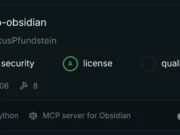Managing user accounts is a core responsibility for any Linux administrator. Whether you’re securing a server or auditing system access, knowing how to list users effectively can save time and prevent misconfigurations. Linux offers multiple command-line tools that allow you to view users, understand their permissions, and check who is currently logged in. This guide explores the most essential commands for listing and managing users in Linux systems.
Understanding How Linux Manages Users
Linux stores user information in several system files. The most important ones include:
- /etc/passwd – contains basic user account information.
- /etc/shadow – stores encrypted user passwords.
- /etc/group – manages group memberships.
Each line in /etc/passwd represents a user and includes details such as username, UID (User ID), GID (Group ID), home directory, and default shell. Understanding these files helps you interpret user data more efficiently.
Using /etc/passwd to List Users
The simplest way to list all users is by reading the /etc/passwd file:
cat /etc/passwdThis displays every user entry on the system. To show only usernames, filter the output using the cut command:
cut -d: -f1 /etc/passwdYou can also count the total number of users with:
cut -d: -f1 /etc/passwd | wc -lThis combination of commands is a quick way to get an overview of all user accounts.
Listing Users with the getent Command
The getent command is more flexible and reliable, especially for systems using network-based authentication like LDAP or NIS.
getent passwdThis retrieves all users from local and network sources. To extract usernames only:
getent passwd | cut -d: -f1The advantage of getent is that it includes remote users, making it ideal for enterprise environments.
Displaying Users with compgen
compgen is a fast command for generating a list of users:
compgen -uIt provides a concise output of all usernames. Similarly, to list all groups:
compgen -gThis command is especially useful for scripting and automation, where you may need a lightweight command to gather user data.
Viewing Currently Logged-In Users
To identify users who are currently logged in, Linux provides several commands:
whoDisplays usernames, terminals, and login times.
wShows logged-in users along with their running processes.
usersLists only the usernames of currently active sessions.
Each of these commands offers a slightly different view, helping you monitor system activity and detect unusual logins.
Using id and groups Commands
If you want to get detailed information about a particular user, use:
id usernameThis displays the user’s UID, GID, and groups. To see the groups a user belongs to:
groups usernameThese commands help administrators verify permissions and ensure users are assigned to the correct roles.
Combining Commands for Auditing
Advanced users often combine commands to perform audits or gather statistics. For example:
awk -F: '$3>=1000{print $1}' /etc/passwdThis lists only regular users, excluding system accounts with lower UIDs. You can also export a full list of users for documentation:
cut -d: -f1 /etc/passwd > userlist.txtConclusion
Understanding and using Linux user listing commands is essential for maintaining system security and organization. Commands like cat, getent, and compgen provide different levels of detail, while who and w give real-time insights into logged-in users. Mastering these tools allows administrators to manage users confidently, detect issues early, and maintain a well-organized Linux environment.













